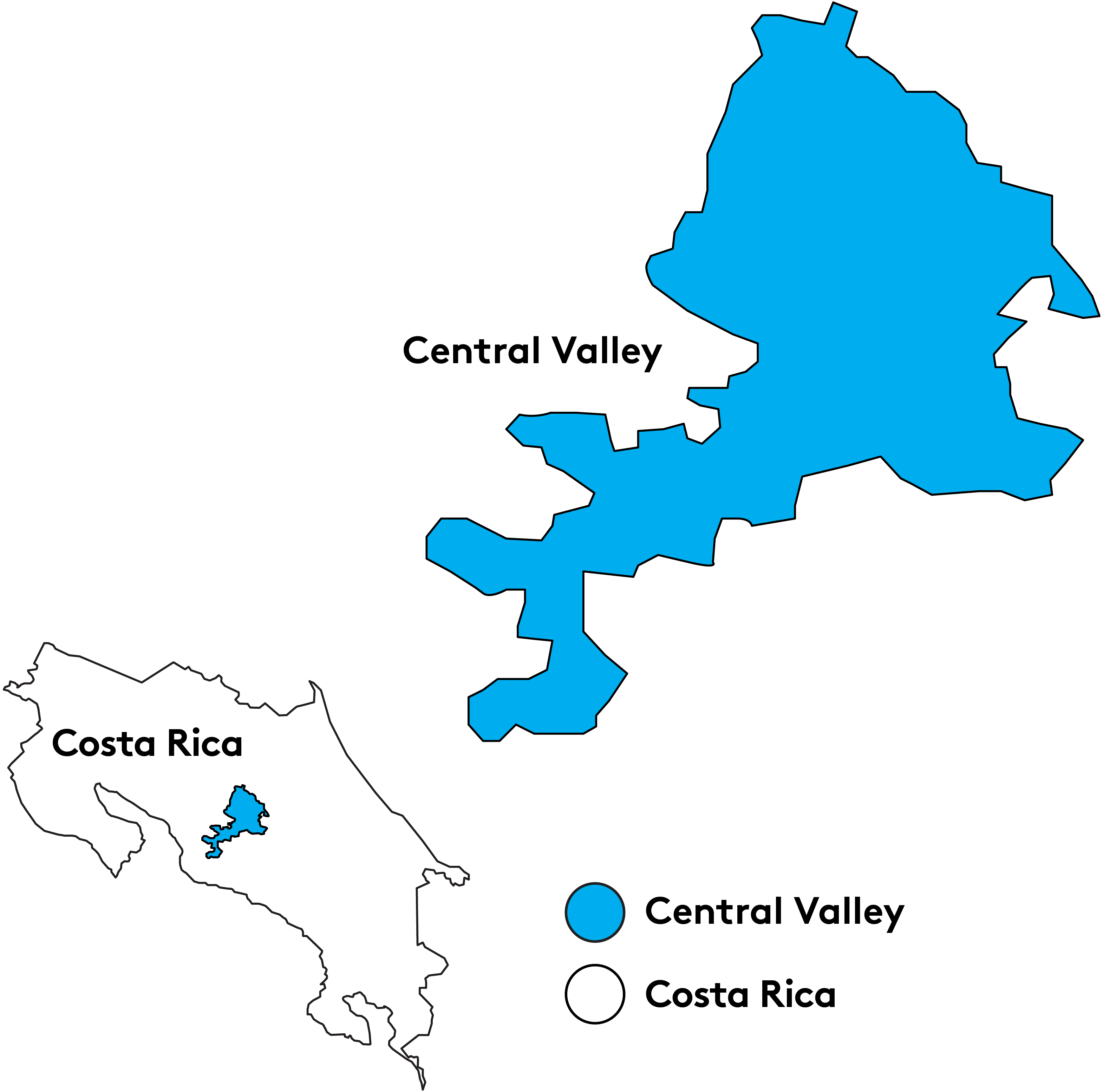In Carrizal Alajuela, between the Poas and Barva volcanoes, rests the fertile Finca Colorado Springs farm. The property was acquired in the 1960’s and has been a family business operation ever since, now operated by the second and the third generation, Patrica Dada and her son Dariush Barinju.
The property covers 50 hectares on which there is a mix of coffee and lime trees. The farm was bought to produce milk originally, but over the years it has changed from dairy farm to citrus orchard to coffee farm. Currently, 30% of the property is dedicated to coffee production, specializing in the Caturra variety with a small plot of Gesha and Centroamericano. Lime tree orchards compose another 20% of the land and the remaining 50% is currently preserved as forest.
The coffee plantation has been spectacular in production and quality and the goal is to specialize in coffee, slowly harvesting more each year and increasing production. The volcanic soils, an abundance of water from the river that crosses the farm, and the elevation all make for very fertile growing conditions. Finca Colorado Springs’ strategic partnership with nearby Hacienda Sonora has enabled them to export their coffee to the world.
This lot of Catimor 51 coffee underwent Natural processing at the nearby Hacienda Sonora’s micromill. The Natural process at Sonora is unique in that it completely omits the use of raised drying beds. As part of Sonora’s focus on scalability and efficiency, combined with rigid cupping sessions, Diego Guardia of Hacienda Sonora found the best quality in drying the coffee cherries on large black sheets made of braided plastic threads known as zaran.
Harvested cherries are first floated with fresh spring water to sort out any defects or impurities that come from the fields. The zaran is laid out on short cut grass fields and coffee cherries are spread out in thin layers. Cherries enjoy direct sunlight from the morning into the afternoon. At the end of each day, the large sheets of zaran are rolled up with a tractor and stacked as a pyramid overnight. Drying takes around two weeks to reach 14% humidity, at which point the coffee is stored in Sonora’s warehouse to rest. Shortly before going through the on-site dry mill, the drying process is finished in dryers known as “guardiolas.” The coffee is finished and prepared for export in Sonora’s dry mill, where it is rigorously sorted for screen size, density, and color using the latest optical technologies.
